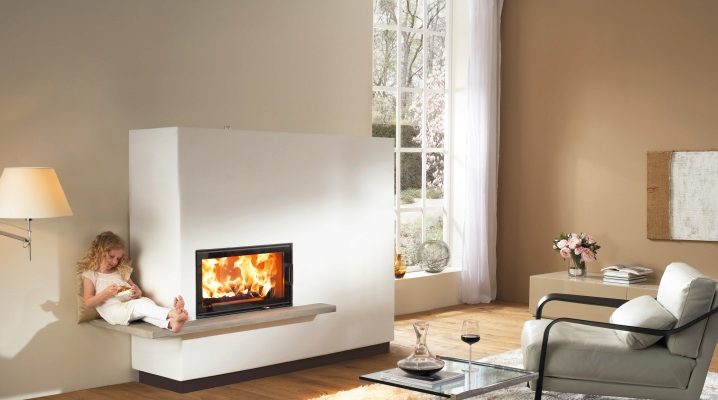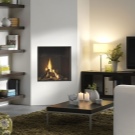Plaster for fireplaces and stoves
Proper plastering of fireplaces and stoves is not an easy task. Incorrectly applied plaster with constant temperature drops may fall off, cause cracks. Properly diluted solution is the key to success. The procedure itself plastering should be carried out in stages, following certain technologies.
Species
When choosing a plaster for fireplaces and stoves, you need to consider that it must be resistant to high temperatures, its differences and perform a protective function. Now you can mix the solution yourself or buy ready-made high-quality mixtures in the hardware store, which are easy to use. Special, heat-resistant “Terrakot” or “Pechnik” plasters are used for leveling the surface of stoves, fireplaces, mangal zones, etc.
There are also decorative types of mixtures for facing the surface and giving it a beautiful look. Depending on the base, which is part of the finishing material, emit acrylic, silicate, mineral and silicone plaster.The so-called Venetian plaster is very beautiful, which in its texture and appearance resembles marble. And the so-called Finnish plaster will resemble natural stone in structure.
Composition
A good alternative to store mixes are hand-cooked. There are many options for mixing, here are a few of them:
- in proportions 1: 0, 2: 2, take clays for finishing, asbestos and sand;
- sand, lime, clay and asbestos 2: 1: 1, 0: 1;
- Portland cement, sand, asbestos, clay in the ratio 1: 2: 0, 1: 1.
To strengthen the composition, you can add straw to it. Before use, all materials are sifted through a sieve with a fine mesh to get rid of large lumps and debris. After the mass is stirred without water - it is added after a while.
Special features
Stoves and fireplaces are an excellent element of decor that allows you to create a cozy atmosphere in the house. Fuel for them - firewood, are environmentally friendly raw materials.
For fireplaces and stoves, so that they last longer, there should be a special care. During their construction, one should adhere to the stage, the correct technology, as well as the use of refractory substances.
The plaster must be heat-resistant flexible in order to expand along with the walls of the furnace when heated. According to the composition, it is necessary to choose natural, since at elevated temperatures toxic substances will vigorously evaporate. Another important criterion is thermal conductivity, because the main function of a stove or fireplace is to heat a room.
DIY decoration
Before starting plastering you need to stock up with the following necessary tools:
- a bucket or other container for the mixture;
- trowel;
- sandpaper;
- brush;
- water tank;
- building level.
After all the preparations you can plaster, following the step by step instructions. Before the start of plastering, the furnace should be heated, cleaned from the remnants of building materials, dust. Then proceed to the process itself, which is performed in several stages:
- Moisturizing the work surface.
- Overlay mortar. Its thickness should not exceed 5 mm, this layer is the main and evens the surface.
- The primer is the second layer, the maximum allowable thickness for it is 5 mm. It is applied more carefully, leveling and rubbing all the flaws. For this layer, a more liquid mixture is used than for the first,and at its drawing constant moistening is necessary.
- Nakryvka. This is the final layer, for which an even more liquid composition of plaster is used. You need to carefully look to the mixture filled all the cracks, zagladila all the irregularities.
As a result, the layer of plaster can exceed 1.5 cm. After that, you can proceed to the design of the fireplace lining: beautifully painted, make a decorative box or pattern that fits the interior of the entire room.














































